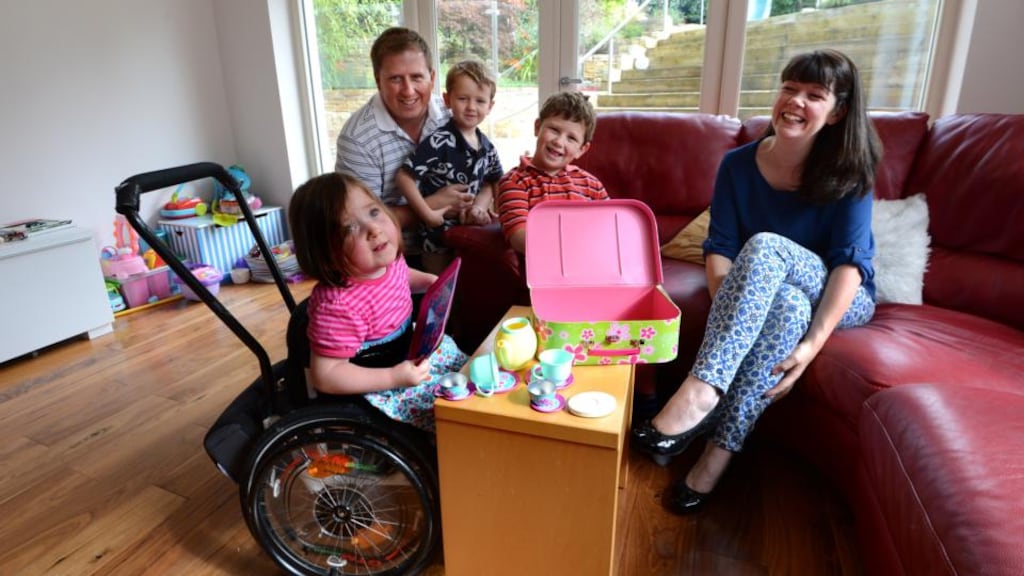The majority of children with spina bifida in Ireland are not having their health needs met because they don’t have access to a specialist multidisciplinary clinic, according to a report to be published tomorrow.
It highlights two big deficiencies in the care of children with a condition described as the most complex physical disability compatible with life, and of which Ireland has one of the highest incidence in the world.
Firstly, children with spina bifida who are more than six years old aren’t linked to a specialist clinic. Secondly, although Temple Street Children’s University Hospital became the national specialised centre in 2008 for all children born from then on with spina bifida and hydrocephalus, it is “grossly under-resourced” and can see only 40 per cent of such patients on the annual basis recommended internationally.
Spina bifida is a neural tube defect that occurs between the third and fourth week of pregnancy, when the bone of the foetal spine don’t close all the way around the spinal cord.
It is usually diagnosed before birth and all newborns are sent to Temple Street where the back is closed and, in the case of the common complication of hydrocephalus – fluid on the brain – a shunt is inserted to keep it drained.
New research
The new research into the health and therapy needs of children with spina bifida, conducted by Temple Street hospital, estimates there are 500 people aged 18 and under living in the Republic with the condition.
The high incidence – 1.17 per 1,000 live births, which is 10 times the rate in the US – is due to a genetic predisposition, low intake of folic acid before conception (which can cut the risk by up to 70 per cent) as well as the nonavailability of pregnancy termination for congenital abnormalities.
One of the authors of the report, Dr Jane Leonard, consultant paediatrician and leader of the spina bifida (SB) team at Temple Street, estimates that it would take more than a trebling of professionals, from the current four at its SB clinic to 13, to provide a full, basic service to all affected children.
"It's embarrassing that we have these big numbers – we are an international phenomenon – and we are not managing very well," Leonard tells The Irish Times.
There are sufficient resources for neurological procedures for newborns, says Leonard, and the shortages of both clinicians and diagnostic services, such as radiography, hit home later. She singles out “massive waiting lists” for orthopaedic surgery, which most children will need as they grow.
Health professionals can’t reverse the disability but their job is to prevent secondary disabilities, such as deformities, kidney problems, and a lot of psychological and emotional issues, she says.
“When the basic health needs aren’t being met there is a knock-on effect on psychological health as well as physical health,” she says.
“That is frustrating to see, as we should be able to prevent avoidable deterioration.”
The report found that 93 per cent of children aged over five require support to achieve continence. It recommends earlier interventions for bladder and bowel difficulties, to protect renal function and to help with continence.
The study also shows: 64 per cent of children have a VP (ventriculoperitoneal) shunt to manage their hydrocephalus;
69 per cent aged over three use a wheelchair;
55 per cent have visual difficulties;
14 per cent have a diagnosed intellectual disability;
Obesity is five times more common than among typically developing children.
A summary of the report will be available from tomorrow on sbhi.ie, the website of the voluntary support group Spina Bifida Hydrocephalus Ireland.











